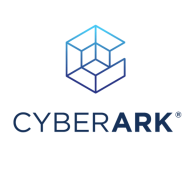
CyberArk Identity and ThreatLocker Elevation Control [EOL] compete in the identity and access management sector. CyberArk Identity has the potential advantage due to its integrated solutions and scalability, which surpass the robust endpoint security focus of ThreatLocker.
Features: CyberArk Identity offers efficient password management, single sign-on, and multi-factor authentication, catering to a comprehensive security stack. ThreatLocker Elevation Control [EOL] focuses on endpoint security with features like application whitelisting and privilege access management, providing targeted protection for endpoint devices.
Ease of Deployment and Customer Service: CyberArk Identity offers a flexible deployment model that supports both cloud and on-premises environments, backed by responsive customer service. In contrast, ThreatLocker Elevation Control [EOL] has an uncomplicated on-premises deployment that might require increased direct support efforts from users.
Pricing and ROI: CyberArk Identity, with its extensive feature set, may entail a higher initial cost but offers a solid ROI through improved security management. ThreatLocker Elevation Control [EOL] might be more cost-effective for specific endpoint protection needs due to its focused technology, yet CyberArk's comprehensive features promise broader ROI potential.

CyberArk Identity is a versatile identity management solution suitable for a wide range of enterprises. It is designed to enhance enterprise security and improve user experience. Its focus on security, compliance, and operational efficiency, combined with positive user feedback, makes it a strong contender in the identity management space.
CyberArk Identity offers a robust suite of features to manage user identities and access privileges. It focuses on securing access to resources across various environments, including cloud and on-premises applications. Its capabilities include single sign-on (SSO), multi-factor authentication (MFA), lifecycle management, and privileged access management. These features are engineered to streamline access control, enhance security, and ensure compliance with regulatory standards.
According to our user interviews, CyberArk Identity is praised for its reliability and user-friendly interface. IT professionals highlight the ease of integration with existing systems, while business executives appreciate the visibility it provides into access and identity management across the organization. Users also commend the responsive customer support, which is crucial for enterprise-level solutions.
IT Professionals found that CyberArk Identity's focus on multi-layered security significantly reduced the risk of data breaches and unauthorized access. With a centralized dashboard and automation features, you can streamline identity and access management tasks, saving time and reducing complexity. Finally, it helps meet various compliance requirements.
ThreatLocker Elevation Control [EOL] is a sophisticated security tool designed to manage application permissions effectively. It enhances control over user privileges, limiting the risk associated with unauthorized access to critical systems.
This tool is specifically crafted for IT environments seeking advanced privilege management. By offering detailed controls over application elevation, it significantly improves security posture without hindering productivity. Users find its granular permission settings and ease of integration particularly valuable, helping to seamlessly implement strict security protocols across enterprise networks. While it provides robust protection, some users have noted that initial configuration can be complex, indicating room for streamlining deployment processes.
What are the standout features of ThreatLocker Elevation Control [EOL]?In industries such as healthcare and finance, ThreatLocker Elevation Control [EOL] is implemented as a key component of cyber defense strategies. Its control over user permissions helps ensure compliance with strict regulatory requirements, making it a trusted choice for safeguarding sensitive data and maintaining operational integrity.
We monitor all Access Management reviews to prevent fraudulent reviews and keep review quality high. We do not post reviews by company employees or direct competitors. We validate each review for authenticity via cross-reference with LinkedIn, and personal follow-up with the reviewer when necessary.